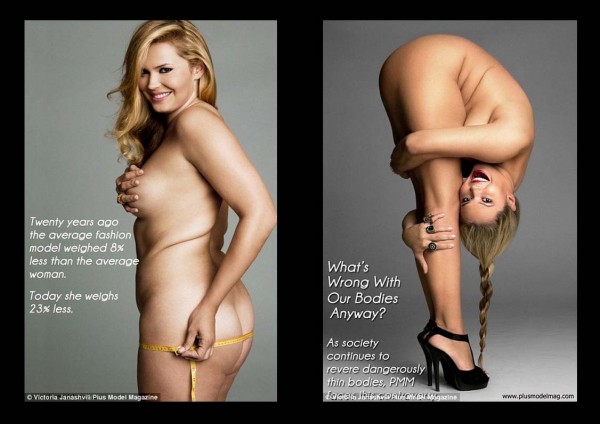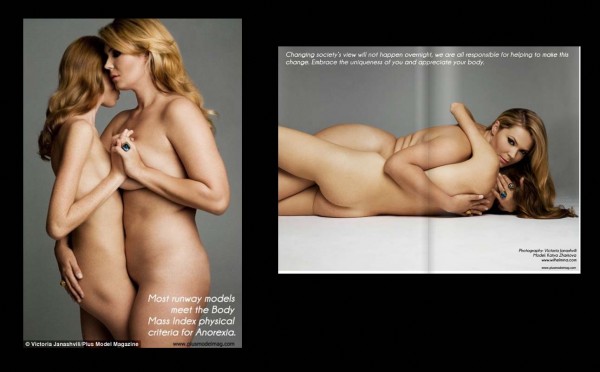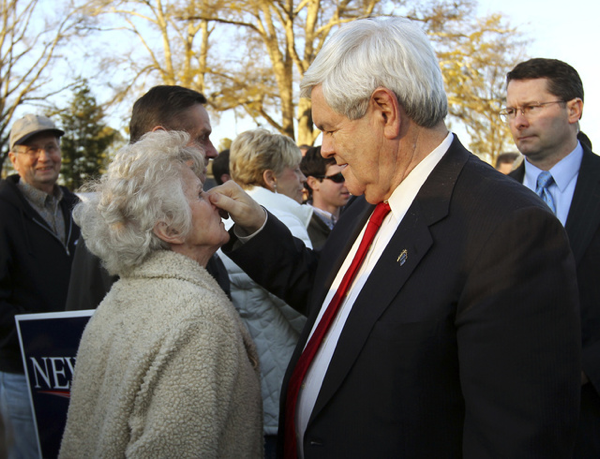Notes
Salacious Sexiness in the Name of the "Larger" Feminist Ideal
Recently, PLUS Model magazine ran a story announcing that “Twenty years ago the average fashion model weighted 8% less than the average woman. Today, she weighs 23% less.” Additionally, the magazine revealed that “the majority of plus-size models on agency boards are between a size 6 and 14.” (That’s right, ladies. If you’ve been counting calories to get back into your size 6s or 8s after the holidays, you’re still “plus-sized” according to the people trying to sell you those clothes). The story went viral, but not because of the statistics (models are skinny—yawn). PLUS Model went with the Internet equivalent of a little black dress: naked women (they never seem to go out of style).
To be sure, the message that women of all shapes and sizes are sexy is an important one, and a perpetual goal of feminism is to help women be comfortable in their own skin. Moreover, body image disorders are a serious public health problem with catastrophic consequences for many women and girls. But is this really the best way to address that problem? Protesting the fashion industry through pictures au naturel is not new. French Elle magazine nabbed publicity by doing the same thing with a plus-size model in 2010. In 2002 the slim (but aging) Jamie Lee Curtis turned heads when she posed without the benefit of professional makeup, stylists, or Photoshop in More magazine (Curtis did wear a sports bra and underwear).
What’s problematic about the PLUS Model layout is the way in which it turns the watchful eye of the male gaze on its ostensibly liberated subjects. The images attempt to argue for women’s inherent worth by placing their cover girl in familiar fashion poses, with skin bared and body coquettishly contorted. Looking at these photos, viewers are left to wonder: just why are women fighting so hard for access to this particular feminine ideal?
PLUS Model underscores its point by pairing a model that meets the industry standard with one who does not, turning the magazine’s ostensibly feminist protest into little more than girl-on-girl action.
It’s notable that when media outlets like ABC News, Fox News, and Salon ran “serious” stories about the shrinking BMIs of fashion models, many chose to feature cropped versions of the racier photos featuring the two women in intimate poses. The edited photos retained their salacious sexiness but excised the bothersome statistics.
Contemporary standards of beauty certainly leave many women hungry . . . too bad society hasn’t lost its appetite for this particular brand of titillation.
— Karrin Anderson




Reactions
Comments Powered by Disqus